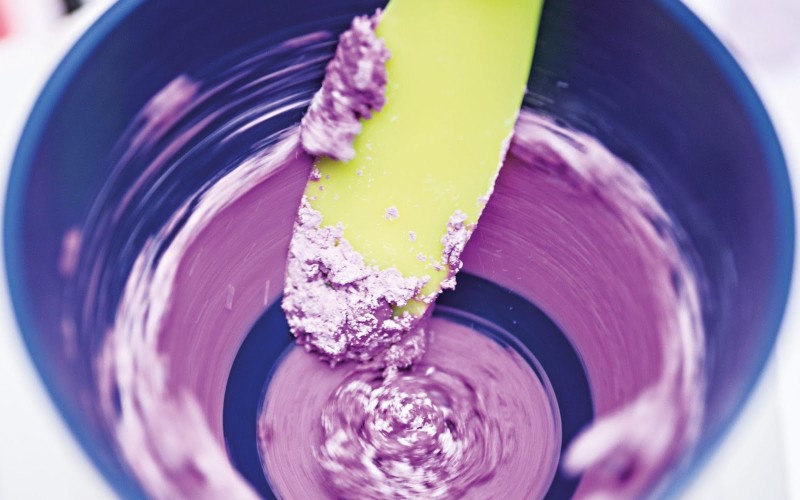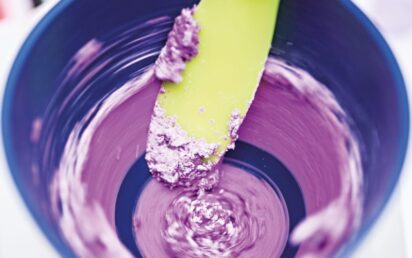Alginate is the most commonly-used impression material for fabricating study models, creating antagonist models and producing work models for orthodontics.
This irreversible hydrocolloid has a lengthy history behind it, since it was invented in the 1930s and has been greatly appreciated ever since.
Alginate can ensure dental practices several advantages, as it is affordable, easy to use, mucostatic and hydrophilic, as well as having neutral odours and flavours, making it readily acceptable for patients.
Undeniably, this impression material also has disadvantages, such as limited tear resistance, poor dimensional stability, poor rigidity and lastly the anything but remote likelihood of incorporating air bubbles during manual mixing. This risk, as we will see below, can be considerably reduced by perfecting the method for processing alginate, and adopting the best techniques and the most effective instruments.
Proper alginate preparation: the importance of proper measuring
Even before the actual alginate mixing phase, in order to obtain an effective impression material, it is important to carry out the preliminary measuring step carefully, i.e. complying with the water to powder ratio recommended by the manufacturer.
Indeed, careless measuring would result in the mixing of an alginate with sub-optimal physical and chemical characteristics and that are in any case different to those that can actually be obtained if the instructions are followed properly: the risk is to get a poor quality resulting impression.
There are two key steps that require attention before proceeding with the mixing of the alginate.
First of all, it is a good idea to shake the container of alginate to favour the dispersion and even blending of the product; secondly, it is advisable to measure the liquid to be added properly, using distilled water at the temperature recommended by the manufacturer.
If the water is too cold, the reaction time will be longer, whereas if the water is too hot the reaction time may be too fast.
For Zhermack impression materials, the manufacturer recommends preparing alginate using deionised water at 23 degrees centigrade. For over 40 years, Zhermack has offered innovative impression-taking solutions, producing the materials placed on the market directly and monitoring each step of processing.
Manual alginate mixing
There are three different techniques for mixing alginate.
The first is manual mixing, which simply involves the use of a mixing bowl and a spatula.
In order to facilitate the incorporation of the liquid it is correct to pour in the powder first, then the distilled water: at this point it is necessary to start the timer, to keep track of the timing of the various steps (mixing, working and, lastly, setting times).
First of all, the movement of the spatula must aim to incorporate the liquid, therefore performing rapid 8-shaped movements inside the mixing bowl.
Once the liquid has been incorporated and a smooth compound has been obtained, it is necessary to change the movement to obtain an impression material without air bubbles by pressing the alginate against the sides of the mixing bowl.
When the timer shows the end of the mixing time, the alginate can be placed in the impression tray.
Semi-automatic alginate mixing
For semi-automatic mixing, the order in which the elements are introduced and the way the timer is used are identical to those of manual mixing.
Once the water has been manually incorporated into the powder, however, the mechanical mixer can be switched on, taking care, once again, to press the compound against the insides of the mixing bowl with the spatula, before proceeding as described above.
Automatic alginate mixing
With automatic alginate mixing, each step is automated.
To create the compound the times must be set directly on the mixing machine, before inserting the powder and then adding water to the container provided. Once the two products have been roughly incorporated using a spatula, the centrifuge can be started, after which the impression material is ready to be placed in the impression tray.
The advantages of the automatic mixing technique
Several studies have shown that the way the alginate is mixed can affect the final characteristics of the impression material, with a consequent influence on the accuracy of the gypsum models and the precision of the prostheses.
Using a mixing machine to process the alginate not only reduces the working time but also reduces the air bubbles and porosity inside it.
The result is an impression material with greater dimensional stability, better elastic recovery and improved compressive strength.


